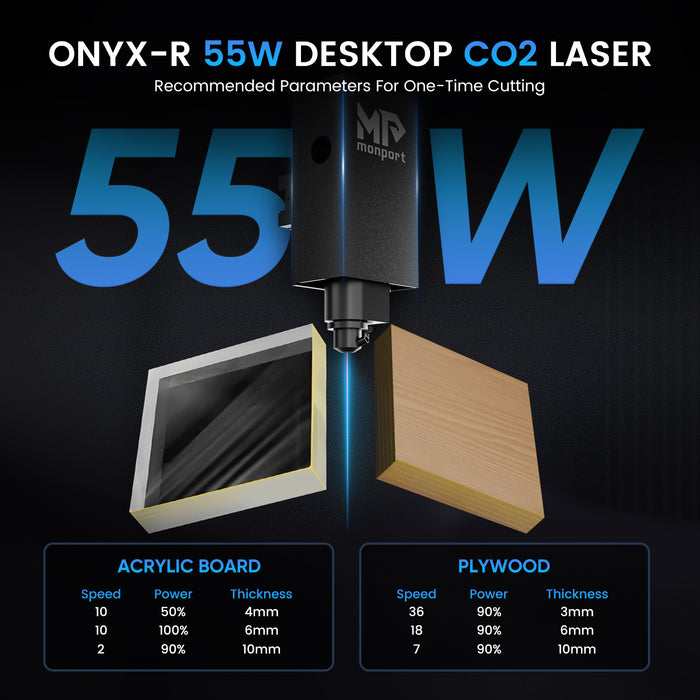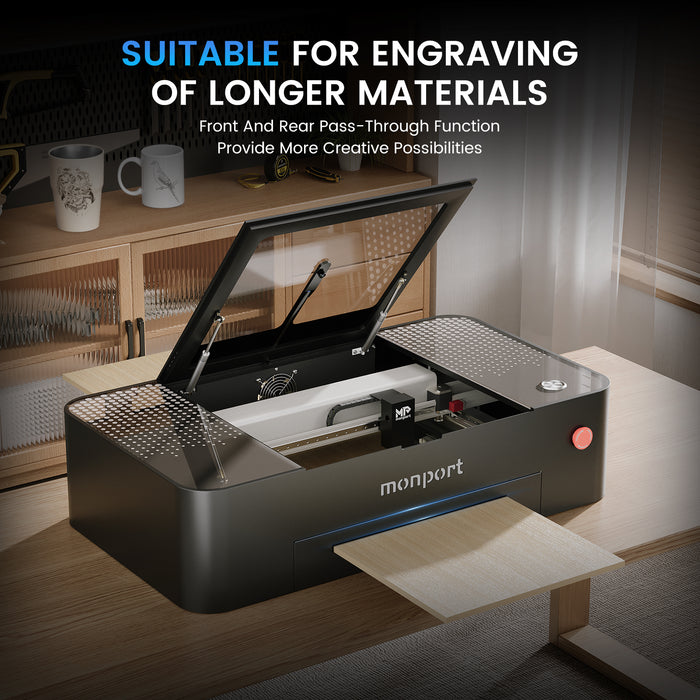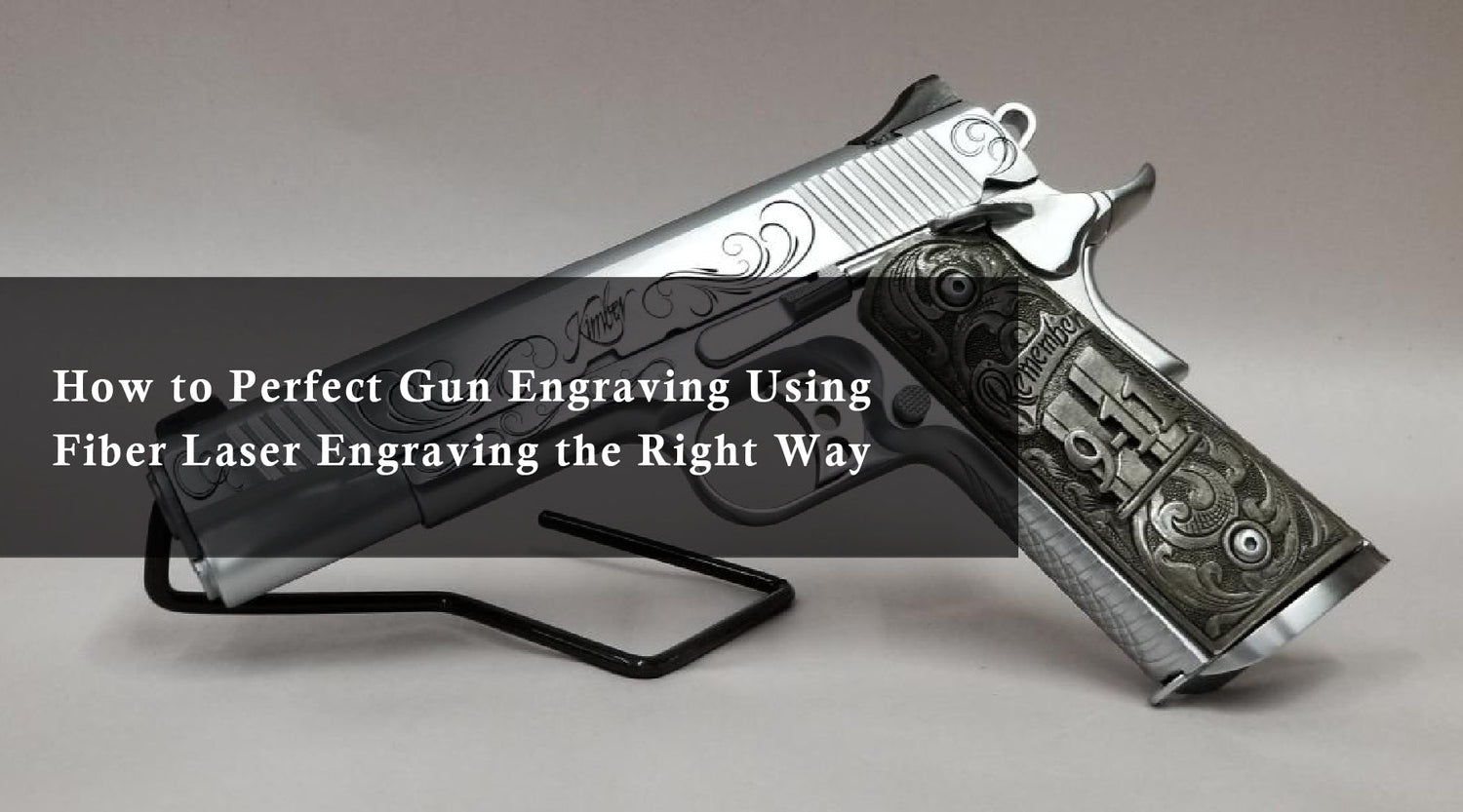How a laser light works and how do CO2 lasers work are fundamental questions that underpin much of modern technology, particularly in fields like manufacturing, medicine, and art. Lasers have become indispensable tools due to their precision, versatility, and efficiency. In this article, we’ll explore the principles behind laser technology, with a focus on how CO2 lasers work, and explain why the MONPORT ONYX 55W Desktop CO2 Laser Engraver with Autofocus and Lazer Max is the best choice for precision engraving and cutting.
Unlock Big Savings at Monport Laser! Use code BESTMP10 at checkout for an exclusive discount – Click here to shop now!
ReadMore: How to Use CO2 Laser Alignment Tool
Introduction: How a Laser Light Works and How Do CO2 Lasers Work
To understand how a laser light works and how do CO2 lasers work, it's essential to start with the basics. A laser, an acronym for Light Amplification by Stimulated Emission of Radiation, produces a highly focused beam of light. Unlike ordinary light sources, lasers emit light coherently, meaning the light waves are synchronized, creating an intense and narrow beam. How is laser light made becomes clear when we explore how CO2 lasers use carbon dioxide as the lasing medium to produce a powerful infrared beam ideal for cutting and engraving materials like wood, metal, and acrylic. This article will explore these concepts in depth and demonstrate how the MONPORT ONYX 55W Desktop CO2 Laser Engraver excels in these applications, especially when paired with the Lazer Max system.
How a Laser Light Works

1. The Basics of Laser Operation
Understanding how a laser light works begins with the concept of energy states in atoms. When atoms absorb energy, their electrons move to higher energy levels. As the electrons return to their original state, they emit photons, which are particles of light. How is laser light made? In a laser, this process is controlled and amplified. The laser medium, which could be a gas, liquid, or solid, is excited by an external energy source, causing a chain reaction of photon emission. These photons are reflected back and forth between mirrors inside the laser, amplifying the light and producing a coherent, focused beam that we recognize as laser light, often enhanced with Lazer Max for improved efficiency.
2. Coherent Light Emission
A key characteristic of how a laser light works is its coherence. Coherent light means that the light waves are in phase, traveling in the same direction with the same wavelength. This coherence allows the laser beam to stay focused over long distances, making it incredibly powerful and precise. This is in contrast to regular light sources, where the light is emitted in multiple directions and with varying wavelengths. When people ask how is laser light made, coherence is a crucial part of the answer. With the added support of Lazer Max, this coherence is even more refined.
3. Applications of Laser Technology
Understanding how a laser light works is essential for appreciating its wide range of applications. Lasers are used in various fields, including communication, medicine, manufacturing, and entertainment. In manufacturing, lasers are invaluable for cutting, engraving, welding, and marking materials with high precision. Medical lasers are used for surgeries, skin treatments, and eye corrections, while in communication, lasers transmit data through fiber optic cables. The coherence and intensity of laser light make these applications possible, especially when coupled with the Lazer Max system to ensure maximum efficiency. Once again, this demonstrates how is laser light made directly impacts its practical uses.
How Do CO2 Lasers Work?
1. The Role of Carbon Dioxide
To understand how do CO2 lasers work, we need to look at the role of carbon dioxide in the process. How is laser light made in CO2 lasers? These are gas lasers that use a mixture of carbon dioxide, nitrogen, hydrogen, and helium as the lasing medium. When an electric current passes through this gas mixture, the energy excites the nitrogen atoms, which then transfer energy to the carbon dioxide molecules. This energy transition results in the emission of infrared light, which is the laser beam. This beam is then directed through a series of mirrors and lenses to focus it on the material to be cut or engraved, enhanced by Lazer Max technology for a finer output.
2. The Power of CO2 Lasers
How do CO2 lasers work to achieve such powerful cutting and engraving? The infrared light produced by CO2 lasers is in the 10.6-micron wavelength range, which is highly absorbed by materials like wood, acrylic, glass, and metal. This absorption converts the laser light into heat, which precisely cuts or engraves the material. The power of a CO2 laser is measured in watts, with higher wattage allowing for deeper cuts and faster processing. The MONPORT ONYX 55W, for example, is a powerful machine that offers the perfect balance of precision and speed for various materials, aided by the Lazer Max system for maximum performance.
3. Advantages of CO2 Lasers
The precision and efficiency of CO2 lasers are unmatched in many applications. They can cut intricate designs, engrave fine details, and produce clean edges with minimal material wastage. Additionally, CO2 lasers can work on a wide range of materials, from organic substances like wood and leather to synthetic materials like acrylic and plastic. This versatility makes CO2 lasers indispensable in industries like manufacturing, arts and crafts, and automotive, especially when combined with Lazer Max for an even more powerful effect. This again highlights how is laser light made enables such versatility.

The MONPORT ONYX 55W Desktop CO2 Laser Engraver
1. Why the MONPORT ONYX 55W Is the Best
When considering how a laser light works and how do CO2 lasers work, the MONPORT ONYX 55W Desktop CO2 Laser Engraver stands out as an exceptional machine. It combines the precision and power of CO2 laser technology with user-friendly features like autofocus, which ensures that the laser beam is perfectly aligned with the material, resulting in consistent and accurate engravings.
2. Autofocus for Precision
The autofocus feature on the MONPORT ONYX 55W is a game-changer in laser engraving. It automatically adjusts the focal distance between the laser head and the material, which is crucial for achieving the sharpest and most detailed engravings. This feature is particularly beneficial when working with materials of varying thicknesses, ensuring that each cut or engraving is performed with optimal precision. For those learning how is laser light made, autofocus shows how controlled focus enhances results.
3. Versatility Across Materials
The MONPORT ONYX 55W is not limited to one type of material. It can easily handle wood, acrylic, glass, leather, and even some metals. This versatility is thanks to the CO2 laser's ability to produce a highly focused and powerful beam, which can be finely adjusted depending on the material and the desired outcome. Whether you’re creating intricate designs on wood or cutting custom shapes out of acrylic, this machine delivers consistent results.
4. Efficiency and Speed
Speed is another advantage of the MONPORT ONYX 55W. With a 55W laser, it offers a great balance between power and efficiency, making it suitable for both detailed engravings and faster cutting tasks. This efficiency is crucial in a professional setting where time is money, allowing users to complete projects quickly without sacrificing quality. Those exploring how is laser light made can see how efficiency is achieved by energy conversion.

Key Takeaways
- Understanding how a laser light works and how do CO2 lasers work is essential for appreciating the technology behind modern laser engravers.
- CO2 lasers, such as those used in the MONPORT ONYX 55W, offer unmatched precision and versatility, making them ideal for a wide range of applications.
- The MONPORT ONYX 55W’s autofocus feature ensures precise and consistent results, regardless of material thickness.
- This CO2 laser engraver is perfect for anyone looking to achieve professional-grade results in cutting and engraving.
Frequently Asked Questions
How is laser light made different from regular light?
Laser light is made through stimulated emission, producing a focused and coherent beam, unlike scattered light from common sources.
How does a laser light work step by step?
Energy excites atoms, stimulated emission releases photons, and mirrors amplify light into a focused beam.
Why is laser light so precise?
The coherence and directionality of laser light explain how a laser light works with extreme accuracy.
How does a laser light work for engraving and cutting?
The focused beam converts energy into heat at precise points, allowing controlled material removal
Conclusion
Understanding how a laser light works starts with knowing how is laser light made and how does a laser light work through stimulated emission and coherence. These principles allow modern laser systems to deliver precise, efficient engraving and cutting across many applications. By mastering how laser light behaves, users gain better control, accuracy, and results in real-world laser projects.
Unlock Big Savings at Monport Laser! Use code BESTMP10 at checkout for an exclusive discount – Click here to shop now!











